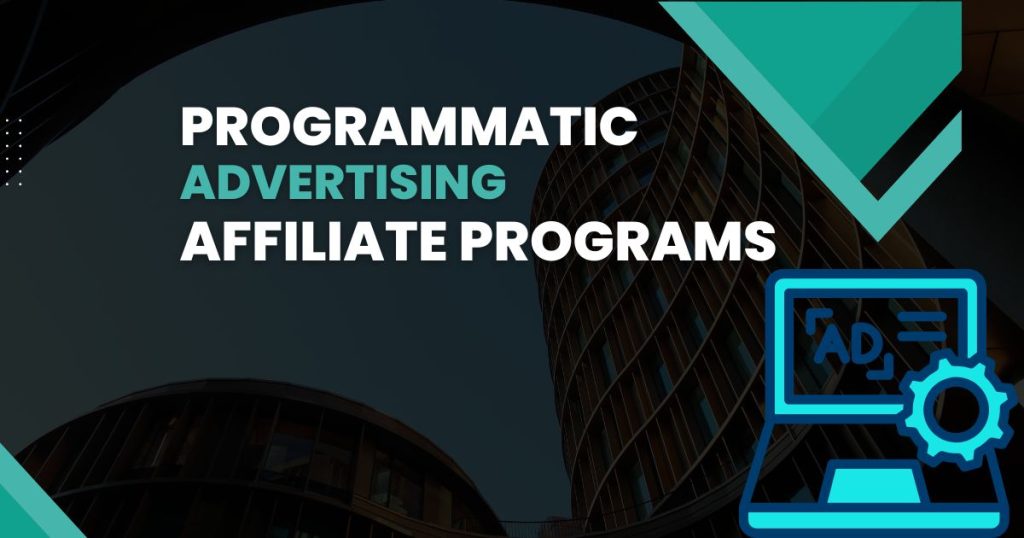Programmatic Advertising for Affiliate Programs: A Beginner’s Guide

Affiliate programs have historically been a dominant revenue source for companies seeking to profit and expand. As the ad tech landscape continues to (quite literally, in certain contexts) blur, programmatic advertising is game-changing for digital advertisers, like you and me, bridging the technology gap between programmatic advertising (RTB) and affiliate marketing.
If you’re looking to increase the effectiveness of your affiliate program, drive results, and maximize ROI, it’s possible that programmatic advertising is your solution. This article describes what programmatic advertising is, the way it operates in affiliate programs, and provides practical recommendations to successfully launch it.
What is Programmatic Advertising?

Programmatic advertising is a system that uses artificial intelligence (AI) and real-time bidding (RTB) to serve ads. This makes it easy for advertisers to hone in on their audience — and in doing so, save themselves some time and money.
When combined with affiliate programs, programmatic advertising has the capability to display extremely targeted ads to users who are most probably to make transactions, all based on statistically driven insights. And this model reduces needless spending and helps ensure your affiliates are reaching the right people, at the right time, on the right platforms.
Why Pair Programmatic Advertising with Affiliate Programs?

1. Enhanced Targeting
Programmatic technology leverages data like demographics, interests, behaviors, and even intent signals to ensure your ads are delivered to the right audience. Affiliates benefit from better conversion rates, and brands maximize their return on investment.
2. Real-Time Optimization
Real-time bidding and AI-driven algorithms enable affiliates to optimize their campaigns continuously. Poor-performing ads can be adjusted or replaced almost instantly, ensuring your advertising budget isn’t wasted.
3. Scalability
Manually managing an affiliate program is time-intensive and prone to errors. With programmatic advertising, you can scale operations and manage multiple campaigns efficiently, all without sacrificing performance.
4. Greater ROI
By delivering hyper-targeted ads to audiences that are already interested in your product or service, programmatic advertising increases the likelihood of conversions. This, in turn, translates into higher returns for your affiliate program.
How to Use Programmatic Advertising for Affiliate Programs
Integrating programmatic advertising into your affiliate marketing doesn’t have to be complicated. Follow these key steps to get started:
1. Understand Your Target Audience
Before launching any programmatic campaigns, you need to build a clear picture of your target audience. Gather data that outlines:
- Demographics: Age, gender, income level.
- Geographics: Location or region when applicable.
- Behavioral Insights: Purchase habits, browsing behavior, and interests.
You can work with your affiliates to share data insights from their user base or use programmatic ad platforms to gather their own audience insights.
2. Choose the Right Programmatic Platform
To run programmatic campaigns efficiently, you’ll need to choose a platform that aligns with your goals and budget. Popular options include:
- Google Display Network for access to a massive global inventory.
- Taboola or Outbrain for effective native advertising.
- MediaMath or The Trade Desk for more advanced targeting features.
If your affiliate program works across multiple verticals or geographies, platforms like these can help you manage campaigns effectively and tap into a broader audience base.
3. Leverage Real-Time Data to Optimize Campaigns
One of the key benefits of programmatic advertising is its ability to optimize campaigns in real-time. Use performance metrics such as:
- Click-through rates (CTR)
- Cost per acquisition (CPA)
- Conversion rates
For instance, if you notice one type of creative is resonating better with your audience, you can double down on that format while phasing out underperforming ones. Affiliates can also tailor their strategies based on performance insights.
4. Personalize and Segment Ads
Personalization is a key factor in affiliate marketing success. Use programmatic advertising to create ad segments that cater to different audience groups. For example:
- Behavioral Targeting: Show specific ads to users based on how they’ve interacted with your website or your affiliates’ promotions.
- Geotargeting: Tailor ads according to location-specific offers or services.
- Lifecycle Stage Targeting: Deliver ads relevant to where the user is in their buyer’s journey (e.g., awareness, consideration, decision).
5. Invest in Retargeting Campaigns
Most affiliate programs understand the importance of retargeting, but programmatic advertising takes this concept to another level. With advanced AI and machine learning, you can serve dynamic ads based on users’ previous browsing behavior across websites or devices.
Example:
A user clicked an affiliate link for your product but didn’t convert. With programmatic retargeting, you can show them an ad highlighting a limited-time discount to entice them to return and complete their purchase.
6. Use Dynamic Creatives
Dynamic creative optimization (DCO) allows you to automatically generate tailored ad creatives based on user profiles or behavior. This is especially effective for affiliate programs since it lets you:
- Automatically include affiliate-specific content or codes in ads.
- Highlight products or services tailored to user interests.
With DCO, affiliates can boost engagement while minimizing the manual effort required to create unique ad variations.
7. Monitor and Measure Success
Tracking performance is crucial in ensuring programmatic advertising delivers results for your affiliate program. Focus on key performance indicators (KPIs) such as:
- Impressions and reach
- CTR across affiliate campaigns
- Conversion rate to gauge user actions post-click
- Affiliate-specific sales metrics to measure individual performance
Ensure that both you and your affiliates align on metrics to avoid any discrepancies, and use this data to continually refine your strategy.
Overcoming Common Challenges with Programmatic Advertising
Like any marketing strategy, programmatic advertising comes with its challenges. Here’s how to solve them:
Challenge 1: Budget Overspending
Solution: Set daily or campaign-wide budget caps within your programmatic platform to avoid overspending.
Challenge 2: Misaligned Targeting
Solution: Regularly review audience data and ensure campaigns remain focused on audiences likely to convert.
Challenge 3: Ad Fatigue
Solution: Rotate ad creatives regularly to keep your campaigns fresh and engaging.
The Future of Programmatic in Affiliate Marketing
Programmatic already is and will continue to be a valuable tool in the affiliate marketing toolbox as it allows the perfect blend of precision targeting, real-time optimization, and scale. With the process I just described above, not only do you save some processes for your campaign, but you also empower your affiliates with tools to convert!
Looking to get started? You might want to get your feet wet with platforms like MediaMath or The Trade Desk to get an early start on your programmatic campaigns. And don’t forget, your best defense is data. Spend it wisely to create campaigns that have no rivals.





